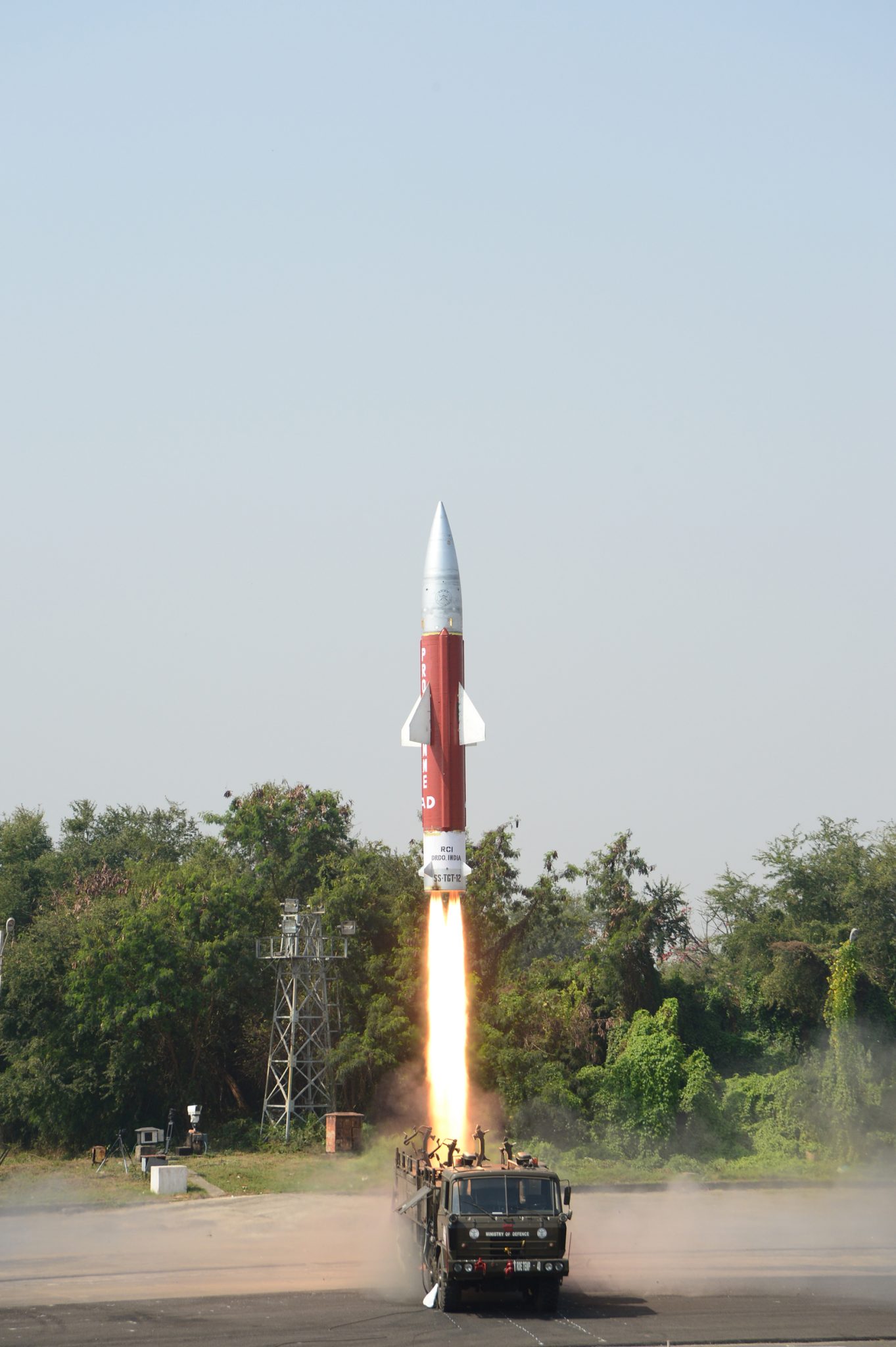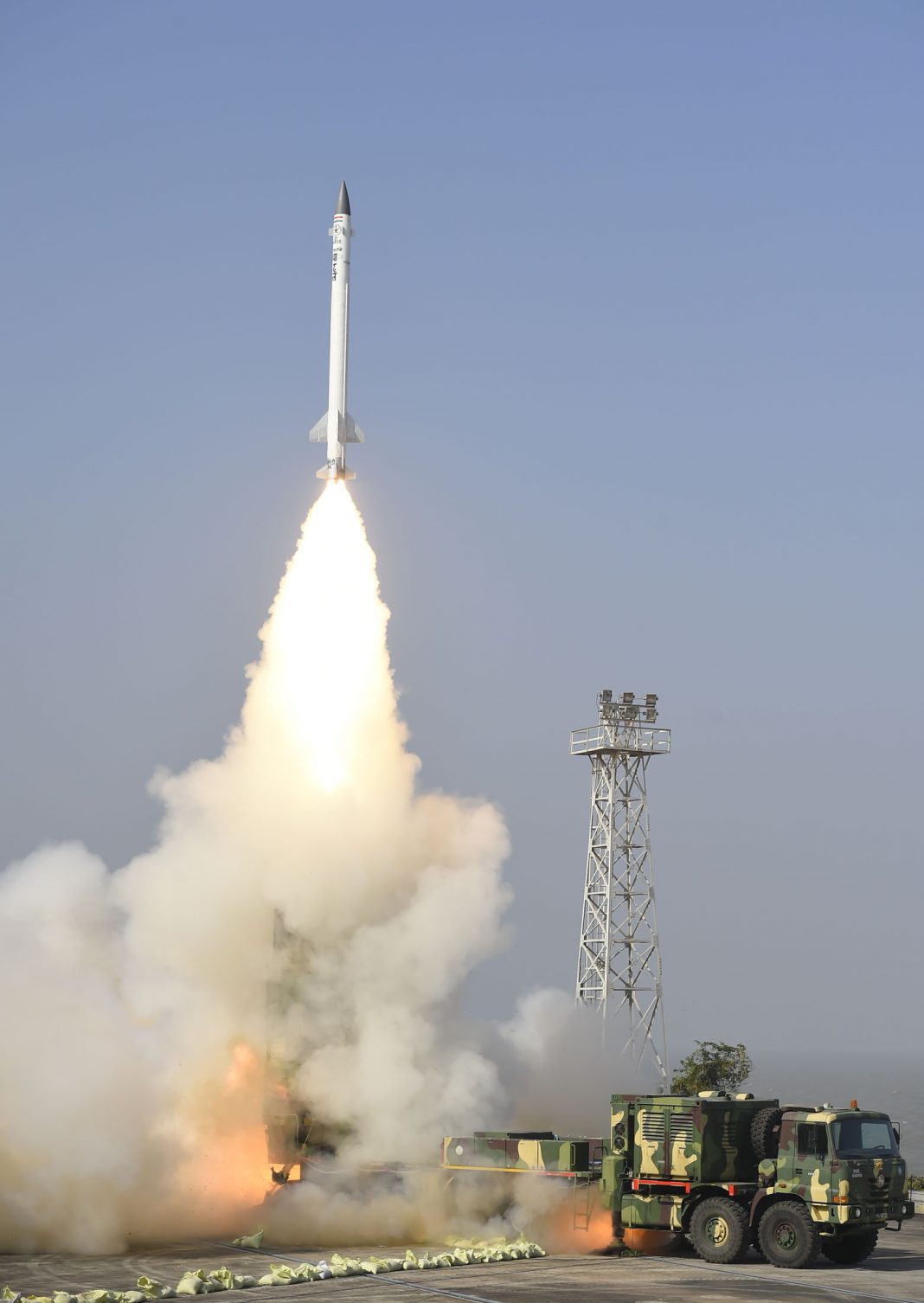In a manner similar to a test in March 2017, the Defence Research and Development Organization’s (DRDO’s) AAD endo-atmospheric ballistic missile defence (BMD) interceptor successfully destroyed a test target at an altitude of 15 km yesterday morning at 0945 hours IST. The AAD configuration for this test was akin to what can be fielded in a final deployment configuration and DRDO sources believe that the system is now ready for induction with the Indian Air Force (IAF), which is likely to be the first military user of this system.
Discussions at the highest levels of government are currently underway to finalize a plan for pushing this system into limited series production with induction and deployment related issues being examined. Incidentally, two locations in North-Western India, Khoa and Roopnagar, have already been chosen for the deployment of ground-based radars that will be a key part of any deployed Indian BMD system.
Yesterday’s AAD mission was as an explosive intercept, with the pre-fragmented warhead on-board the missile being made to explode using the missile’s radio proximity fuze (RPF) as it neared the incoming target. Prior to launch, ground based radars such as the Long Range Tracking Radar (LRTR) and the Multi-function Fire Control Radar (MFCR) located faraway from the AAD’s launcher acquired the target, tracked them and passed on the data to the Master Control Centre (MCC), which generated the expected trajectory of the target and alerted the interceptor missile. Both of these radars were initially developed by DRDO’s Electronics and Radar Development Establishment (LRDE), Bengaluru with foreign collaboration. The version of the LRTR used in today’s yesterday’s AAD mission is an L-band array that can track a ballistic target with a radar cross section (RCS) of 0.1 sqm from over 1500 km away. MFCR, which is a S-band array has a tracking range of over 370 km for a target with a RCS of 0.3 sqm. Both radars are capable of variable track rates. Embedded below is a video of the electro-optical track from yesterday’s test.
//delhidefencereview.com/wp-content/uploads/2017/12/vFIDQ3na-5XGChps.mp4
Once launched, the AAD was initially guided by its on-board inertial navigation system (INS) which received continuous updates about the incoming target’s trajectory from the ground-based radars mentioned above through a secure data link. After that, a radio frequency (RF) seeker in the AAD’s nose cone section tracked the target while an intercept course was plotted by its on-board computer (OBC).
The single-stage target missile (see image below) used in this test is based on a Prithvi booster and is capable of mimicking the re-entry characteristics of a medium range ballistic missile (MRBM). In order to successfully simulate the angle of attack and re-entry velocity usually associated with a MRBM, this target missile has an apogee greater than that of a standard member of the Prithvi missile family. Incidentally, the target missile also boasts a ring-laser gyroscope (RLG) based INS.

The AAD itself is a single-stage missile powered by solid propellants delivering high specific impulse values. The missile has a length of 7.32 metres, diameter of 420 mm and a weight of 1275 kg. Its INS has at its heart a fibre optic gyroscope (FOG) with 0.1 degree/hr drift, which receives updates from ground based radars. For the end-game, the AAD uses an indigenously developed Ku-band RF seeker with considerable tracking range.
The AAD can intercept targets at altitudes between 15 to 25 km. In the course of flight, AAD achieves high supersonic speeds and the efficacy of its thermal protection systems as well that of its actuation system has been demonstrated repeatedly.
Yesterday’s test was witnessed by the IAF’s Vice Chief of Air Staff, Air Marshal Sirish Deo, a fact that is indicative of user interest in this system. Scientific Advisor to India’s Defence Minister & Director General (Missiles & Strategic Systems), Dr G Sateesh Reddy, who was also present during the launch operation believes that ‘the repeat performance of the interception demonstrates India’s professional capability in high technology oriented BMD’. U. Rajababu, who is Programme Director for DRDO’s ‘AD’ mission which oversees India’s BMD programme and Shashikala Sinha, who is Project Director for the AAD system itself, were also present for this test mission.
© Delhi Defence Review. Reproducing this content in full without permission is prohibited.
































